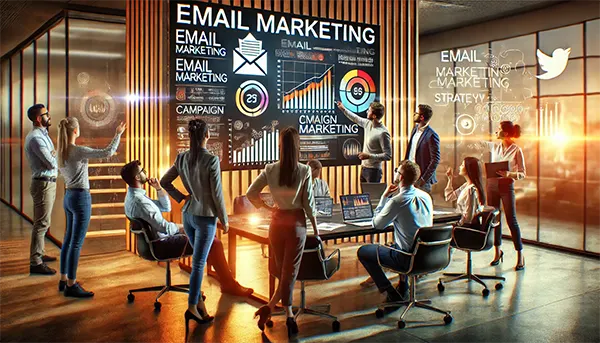
Email marketing remains one of the most powerful tools for businesses in 2025, but the strategies that drive results have evolved. Marketers must adapt to changing consumer behaviours, new regulations, and advanced AI-driven automation to maintain high engagement and conversion rates.
AI-Powered Personalisation: The Key to Higher Engagement
Artificial intelligence (AI) is transforming email marketing, enabling brands to deliver hyper-personalised content at scale. AI-driven tools analyse customer behaviour, past interactions, and preferences to generate customised email sequences that boost engagement.
One of the most effective AI applications is predictive analytics. By assessing previous user activity, AI can determine the best time to send emails, the most relevant content, and even subject lines that increase open rates. This data-driven approach ensures that marketing emails feel less intrusive and more relevant.
Another breakthrough in 2025 is AI-powered content generation. Marketers can use AI to craft compelling email copy, create automated yet human-like responses, and dynamically adjust content based on real-time user engagement. This reduces the manual effort required while significantly improving results.
Hyper-Segmentation: Targeting the Right Audience
Gone are the days of generic email campaigns. Hyper-segmentation allows brands to divide their audience into highly specific groups based on demographics, purchase history, engagement levels, and even psychographics.
By leveraging detailed segmentation, businesses can craft highly relevant messages for different customer personas. For instance, an online casino operator can send exclusive VIP offers to high-rollers while providing beginner-friendly guides to newcomers. This ensures each subscriber receives content tailored to their needs and interests.
Additionally, real-time behavioural segmentation enhances engagement. If a subscriber clicks on a promotional email but doesn’t convert, an automated follow-up sequence can be triggered, offering incentives or additional information to nudge them towards action.
Interactive Emails: Enhancing User Engagement
Static emails no longer hold users’ attention. In 2025, interactive emails are the new standard, incorporating elements that allow recipients to engage with content without leaving their inbox.
Gamification elements, such as spin-the-wheel discounts, quizzes, and interactive surveys, make emails more engaging and fun. These features not only improve user experience but also provide valuable insights into customer preferences.
Another trend is embedded shopping experiences. Instead of redirecting users to a website, interactive emails allow them to browse products, select options, and even complete purchases directly within the email. This reduces friction and enhances conversion rates.
AMP Emails: The Future of Email Interactivity
Accelerated Mobile Pages (AMP) technology has made emails more dynamic by enabling live content updates, form submissions, and interactive features within emails. In 2025, AMP emails are essential for brands looking to boost engagement.
One major benefit of AMP is real-time content updates. Users can see the latest product availability, pricing, or personalised recommendations without needing to open a browser. This ensures that emails always deliver relevant and up-to-date information.
Additionally, AMP enables embedded surveys and appointment scheduling, allowing users to complete actions seamlessly within their inbox. This improves user experience while increasing conversion rates.

Privacy and Compliance: Adapting to Stricter Regulations
With increasing concerns about data privacy, email marketers in 2025 must comply with stricter regulations, such as GDPR, CCPA, and new global data protection laws. Failing to adhere to these regulations can result in severe penalties and loss of customer trust.
One critical adaptation is implementing zero-party data collection. Instead of relying on third-party tracking, brands encourage users to voluntarily share information through preference centres, interactive surveys, and gamified experiences. This ensures compliance while maintaining data accuracy.
Additionally, email authentication protocols like DMARC, SPF, and DKIM are now mandatory to protect brands from phishing attacks and email spoofing. Marketers must ensure that their email domains are fully authenticated to maintain high deliverability rates.
The Rise of Permission-Based Marketing
Consumers are more aware of their data rights than ever before. Brands must embrace permission-based marketing, ensuring that subscribers explicitly opt in to receive communications. This improves email engagement rates and reduces spam complaints.
Transparency is key. Marketers must clearly state how subscriber data is used, provide easy opt-out options, and maintain compliance with evolving regulations. This fosters trust and long-term customer relationships.
Furthermore, ethical email marketing practices, such as sending value-driven content instead of constant promotions, enhance brand credibility and increase customer loyalty.
